DYNAMIC CURVATURE EFFECTS ON BIFURCATING
CORONARY ARTERY FLOW
Cooperative study
TU-Graz, Inst. of Mathematics: M. Prosi, K. Perktold
Duke Univ., Durham, USA, Dept. of Biomed. Engineering: M.H. Friedman
The coronary arteries undergo large dynamic variations during each
cardiac cycle due to their position on the beating heart. The local artery
curvature varies significantly during myocardial contraction.
Computer simulation is carried out in an anatomically realistic model of
the bifurcation of the left anterior descending coronary artery
and its first diagonal branch, which is known to be atherosclerosis-prone.
The study applies a physiologic coronary flow wave and curvature history.
The model permits one to separate the effects on the flow field and the
shear field of flow division, out-of-plane curvature, and dynamic curvature.
The aim of the study is to analyze the effects of dynamic curvature on
coronary artery hemodynamics and to compare these with the effects
of vessel branching.
CORONARY ARTERY REPLICA
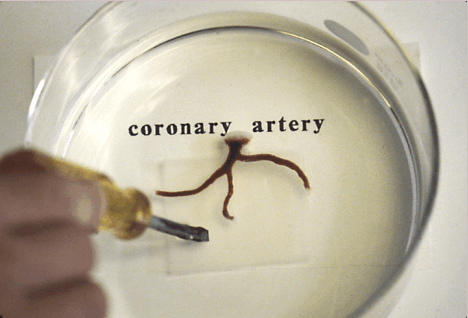
Left anterior descending c.a.
(LAD) - First diagonal branch (D1)
LAD-D1 BIFURCATION MODEL
INPUT DATA: Geometry Dynamics: Flow, Curvature
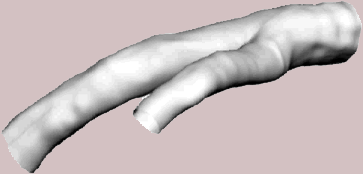
 | 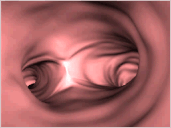 |
| Curvature
history | |
- Coronary arteries move with the heartbeat
- The interaction of coronary artery
dynamics and bifurcating flow is of interest
® Study the effects of changes in
out-of-plane coronary curvature on the
pulsatile flow field in the neighborhood of a branch.
WALL SHEAR STRESS
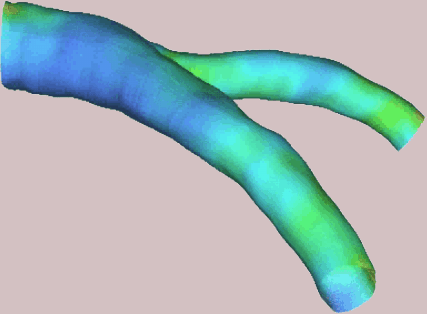
WSS distribution
at onset of systole
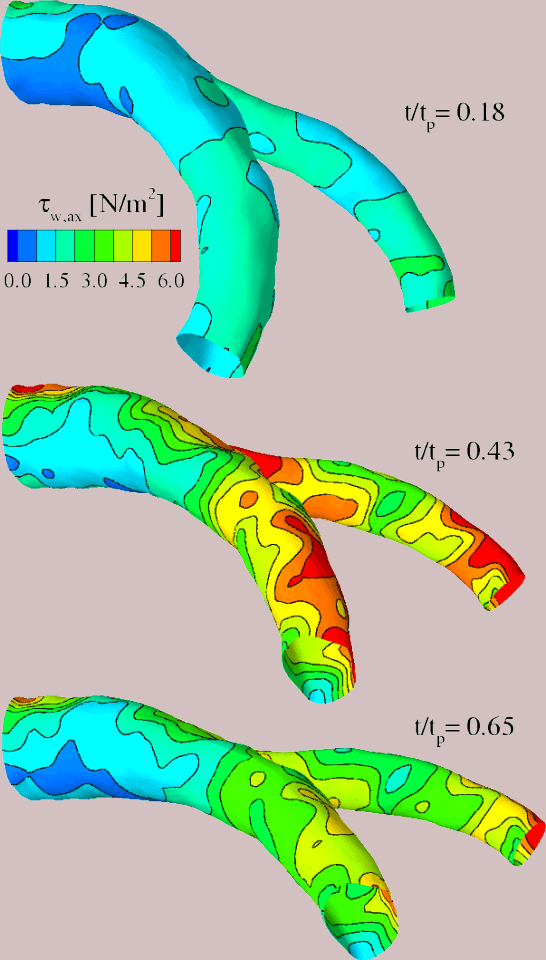
| 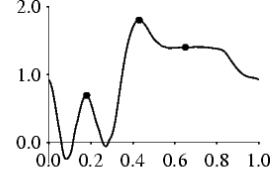
Flow pulse wave
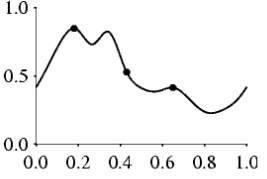
Curvature history |
- High shear stress variation
- Outer wall: Low shear region during the
cycle
- Pericardial wall: Downstream increase of shear
CONCLUSION
- In the neighborhood of the branch ostium, the bifurcating flow generally dominates
the effect of curvature.
- The relative effect of curvature increases
distally.
- In systole, when curvature is greatest, its effect on wall shear stress is
dominated by the flow wave.
- Dynamic curvature reduces the shear along the outer wall
of the bifurcation.
back to Selected studies







